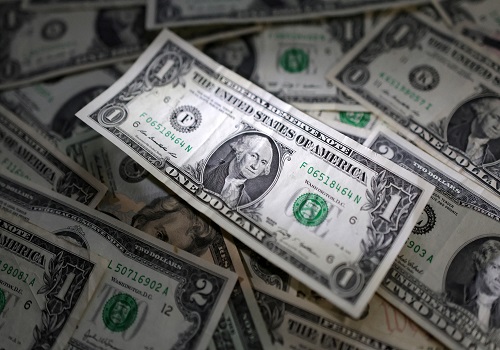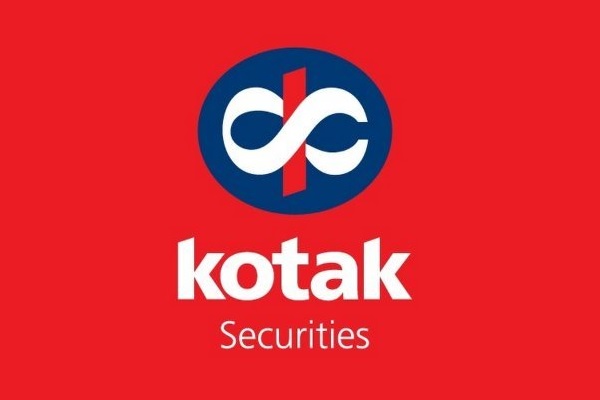Naturalgas trading range for the day is 289.4-319.4 - Kedia Advisory

Gold
Gold yesterday settled higher by 0.28% at 117,588, supported by expectations of further Federal Reserve rate cuts and renewed safe-haven demand. Pressure on the U.S. economy intensified as the ADP report showed a decline in private-sector employment for the second consecutive month, the largest since March 2023, raising bets that the Fed will remain dovish. The U.S. government shutdown has delayed the September nonfarm payrolls report, adding uncertainty ahead of the Fed’s late-October policy meeting. Political gridlock and potential job risks further boosted gold’s safe-haven appeal. Meanwhile, the PBoC continued its gold purchases for the tenth straight month, while China also offered to act as custodian for foreign gold, signaling long-term demand support. However, physical demand trends showed mixed signals. China’s gold imports via Hong Kong fell 39.11% in August to 26.746 tons, while dealers widened discounts to $31–$71 per ounce due to subdued demand. In India, premiums held steady at up to $7 per ounce, the highest since November 2024, reflecting resilient demand despite elevated prices. Elsewhere in Asia, premiums stayed moderate in Hong Kong, Singapore, and Japan. Technically, the market is under fresh buying with open interest rising by 3.22% to 15,493 as prices gained 323 rupees. Gold is finding support at 116,975, below which 116,360 could be tested, while resistance is seen at 118,325, and a breakout above may drive prices towards 119,060.
Trading Ideas:
* Gold trading range for the day is 116360-119060.
* Gold rises on Fed rate cut expectations and safe-haven demand.
* ADP data shows biggest private job losses since March 2023.
* Fed policy outlook clouded as nonfarm payrolls report faces delay.
Silver
Silver yesterday settled higher by 1.81% at 1,44,720 as investors weighed political and monetary uncertainty in the U.S. Precious metals found support earlier this week after the U.S. government shut down for the first time in nearly seven years, delaying key economic data including the September nonfarm payrolls report. The ADP employment data showed a surprise fall of 32,000 jobs versus expectations of a 50,000 gain, signaling labor market weakness and boosting expectations of further Federal Reserve rate cuts, though officials remain cautious amid lingering inflation risks. On the supply-demand front, silver drew strength from deficit concerns, with the Silver Institute projecting a global shortfall for the fifth straight year in 2025. Production is expected at 844 million ounces, nearly 100 million ounces short of demand. Investment inflows remain strong, with silver ETP holdings reaching 1.13 billion ounces by June, close to record highs, and their value surpassing $40 billion for the first time. The global silver deficit is expected to narrow by 21% to 117.6 million ounces this year, supported by higher supply and slightly weaker demand, though industrial demand is projected to remain steady after record highs in 2024. Technically, the market is under short covering as open interest dropped by -13.46% to 17,768 while prices gained 2,575 rupees. Silver is getting support at 1,42,885, below which 1,41,050 could be tested, while resistance is seen at 1,46,135, with a move above likely to take prices towards 1,47,550.
Trading Ideas:
* Silver trading range for the day is 141050-147550.
* Silver hits all time high crossing 1,45,000 amid US shutdown, supply deficit
* Prolonged shutdown could delay key economic data, including nonfarm payrolls.
* Global silver market projected to remain in deficit for the fifth consecutive year.
Crude oil
Crude oil yesterday settled lower by -1.36% at 5,493 as concerns over a U.S. government shutdown weighed on global economic sentiment, while expectations of additional supply from OPEC+ pressured prices. Reports suggest that OPEC+ may agree to boost production by up to 500,000 barrels per day (bpd) in November, tripling October’s increase, as Saudi Arabia aims to reclaim market share. Meanwhile, an OPEC+ panel emphasized the importance of full compliance with existing output cuts and adjustments for members that previously exceeded quotas. On the demand side, weak factory activity data across major Asian economies in September raised concerns about fuel demand prospects in the world’s largest consuming region. In the U.S., crude production climbed to a fresh record of 13.64 million bpd in July, with Texas and New Mexico leading the gains. The Energy Information Administration reported a 1.8 million-barrel rise in crude inventories last week to 416.5 million barrels, exceeding expectations, though Cushing stocks fell slightly by 271,000 barrels. Gasoline stocks rose sharply by 4.1 million barrels, while distillate inventories increased by 578,000 barrels against forecasts of a draw, highlighting softer demand trends. Technically, crude oil remains under fresh selling pressure as open interest surged 19.36% to 12,926 while prices slipped by 76 rupees. Immediate support is seen at 5,436, with a break below exposing 5,380, while resistance is placed at 5,572, above which 5,652 could be tested.
Trading Ideas:
* Crudeoil trading range for the day is 5380-5652.
* Crude oil dropped as a U.S. government shutdown fed worries about the global economy.
* U.S. crude oil production rose to a fresh monthly high of 13.64 mbpd in July, up 109,000 bpd from the previous record in June.
* Crude inventories rose by 1.8 million barrels to 416.5 million barrels in the week ended September 26, the EIA said.
Natural gas
Natural gas yesterday settled higher by 4.12% at 308.3, supported by a drop in daily output and technical short-covering, even as forecasts point to weaker demand in the near term. Prices advanced despite lower gas flows to LNG export facilities, comfortable storage levels, and expectations for mild weather across the U.S. through mid-October, which should cap heating demand. According to LSEG, average output in the Lower 48 states slipped to 107.0 bcfd so far in October, down from 107.4 bcfd in September and a record 108.3 bcfd in August. Robust production earlier this year has enabled strong injections into storage, leaving inventories about 6% above the seasonal norm. Meteorologists expect warmer-than-usual weather through October 16, which will likely trim heating demand more than offsetting air-conditioning-related usage. LSEG projects total U.S. gas demand, including exports, to ease from 101.4 bcfd this week to 98.8 bcfd next week. Storage rose by 75 bcf in the week ending September 19, in line with expectations, taking inventories to 3,508 bcf, up 0.6% year-on-year and 6.1% above the five-year average. Technically, the market is under fresh buying with open interest up 3.95% to 22,626 as prices gained 12.2 rupees. Immediate support is at 298.8, with a break lower exposing 289.4, while resistance is seen at 313.8 and above this, 319.4 could be tested.
Trading Ideas:
* Naturalgas trading range for the day is 289.4-319.4.
* Natural gas jumped on a drop in daily output and some technical short-covering.
* Prices rose despite a decline in daily gas flows LNG export plants, ample amounts of fuel in storage.
* Average gas output in the Lower 48 states fell to 107.0 bcfd so far in October, down from 107.4 bcfd in September.
Copper
Copper yesterday settled up by 0.54% at 957.65, supported by mine supply disruptions and a softer U.S. dollar as the government shutdown began. The supply outlook tightened further after Freeport-McMoRan declared force majeure at its Grasberg mine, while potential labor strikes at Antofagasta’s Los Pelambres mine in Chile added to concerns. Chile, the world’s top producer, reported a sharp 9.9% year-on-year output drop in August, the steepest in over two years, following an accident at Codelco’s flagship mine. Meanwhile, copper inventories in Shanghai warehouses fell 3.8% week-on-week, signaling strong demand. On the forecast front, Goldman Sachs cut its global copper mine supply estimates for 2025–26, expecting a total output loss of 525,000 tons, while Citi lifted its near-term copper price outlook to $10,500 per ton and projected a rally toward $12,000–$14,000 next year amid a deficit-driven market. The International Copper Study Group reported a refined copper surplus of 57,000 tons in July, but year-to-date balances show a sharp narrowing surplus compared with last year. China, the world’s largest consumer, saw refined copper output fall 5% in September, while copper concentrate imports rose 8% in August, though refined imports dropped 11.5%. Technically, the market is under fresh buying momentum as open interest rose 2.15% to 7,691 contracts. Copper finds immediate support at 951, with further downside possible toward 944.2. On the higher side, resistance is at 961.9, and a decisive move above could push prices toward the 966 mark.
Trading Ideas:
* Copper trading range for the day is 944.2-966.
* Copper gains on mine supply disruptions and weaker U.S. dollar.
* Freeport’s Grasberg force majeure ends copper’s prolonged rangebound trading.
* Chile’s copper output drops 9.9% in August, sharpest in years.
Zinc
Zinc yesterday settled up by 0.68% at 290.2, supported by falling inventories and tightening supply conditions in China. LME stocks dropped more than 5% in the last three days to 40,500 tonnes, marking an 80% decline so far this year, while Shanghai Futures Exchange zinc inventories also slipped 2.5% week-on-week. Cash zinc’s premium to the three-month contract surged to $51 per ton, its highest since October last year, reflecting strong near-term demand amid dwindling stocks. On the policy front, the European Commission’s plan to impose steep tariffs of 25–50% on Chinese steel imports further underpinned sentiment, aiming to curb global overcapacity that has weighed on steel margins and hindered investment in Europe’s decarbonization efforts. China’s zinc production in August touched its highest monthly level since early 2024, though September output is projected to dip slightly by 16,400 mt to 609,800 mt, with downside limited as miners and refiners face pressure for capacity cuts. Earlier disruptions, including Teck Resources’ Red Dog mine posting a 20% drop in Q1 output and Nyrstar announcing a 25% annual cut, highlight supply risks. ILZSG data showed the global zinc market moved into a surplus of 30,200 tons in July, with a 72,000-ton surplus in the first seven months of 2025, down from 185,000 tons a year earlier. Technically, fresh buying interest was seen with open interest up 1.82% to 3,572 contracts. Zinc finds support at 288.5, with a break lower exposing 286.7, while resistance is at 291.3 and a move above could push prices toward 292.3.
Trading Ideas:
* Zinc trading range for the day is 286.7-292.3.
* Zinc prices rise as LME stocks drop sharply over 5% in last 3 days.
* Zinc inventories in warehouses monitored by the Shanghai Futures Exchange dropped 2.5% from last Friday.
* Teck’s Red Dog and Nyrstar announce major production cuts this year.
Aluminium
Aluminium yesterday settled down by -0.12% at 259.2 as weak Chinese macroeconomic indicators weighed on sentiment. China’s official manufacturing PMI contracted for a sixth consecutive month in September, standing at 49.8, below the 50-mark that separates expansion from contraction. However, downside remained limited on persistent supply threats. In North America, demand declined 4.4% year-on-year in H1 2025 amid weaker exports and tariff-related pressures. China’s output is capped by its annual limit of 45 million tons, with production already hitting 44 million tons in April and capacity estimated at 45.69 million tons in June. On the supply side, Guinea Alumina lost all its mining licenses after a government order transferring leases to a new state-run entity, potentially halting ore production for Emirates Global Aluminium. At the same time, speculative bullish positions and physical demand drove a sharp decline in LME aluminium stocks by nearly 100,000 tonnes to 375,000 in the first part of September. According to IAI data, global primary aluminium output rose 0.9% year-on-year to 6.277 million tonnes in August, while WBMS data showed a supply deficit of 119,900 tonnes in July and nearly 985,300 tonnes between January and July 2025. Technically, the market witnessed long liquidation with open interest down 0.61% to 4,208. Aluminium is finding support at 258.5, with further weakness possible towards 257.9, while resistance is at 259.7 and a move higher could test 260.3.
Trading Ideas:
* Aluminium trading range for the day is 257.9-260.3.
* Aluminium dropped as China's manufacturing activity shrank for a sixth month in September.
* However downside seen limited due to persistent threats to supply.
* Global primary aluminium output in August rose 0.9% year on year to 6.277 million tonnes – IAI
Turmeric
Turmeric yesterday settled down by -2.08% at 12,026, pressured by expectations of higher acreage this season following favorable rainfall. However, the downside remained limited as recent heavy rains caused damage to standing crops in major growing regions, particularly in Nanded, where approximately 15% of the crop area was affected. The IMD forecast of normal to below-normal rainfall in September for parts of South India has raised concerns among turmeric growers. Turmeric stocks held by farmers in Warangal are nearly exhausted, with no fresh arrivals over the past two days, supporting firmness in prices. On the production front, current dry weather conditions support timely planting, and preliminary estimates indicate turmeric acreage may increase by 15-20%, as other crop options offer lower profitability. For the 2024-25 season, turmeric was sown over 3.30 lakh hectares, 10% higher than the previous season. At Duggirala, fresh crop arrivals continue to attract strong buyer interest, with new stock fetching higher prices due to superior quality. Market activity remains robust with daily trade volumes between 1,000–1,200 bags, and approximately 50–55% of the new crop has already been traded. Turmeric exports during April–July 2025 rose by 2.29% to 63,020.23 tonnes compared to the same period last year. Technically, the market is under long liquidation with open interest down -12.43% to 11,770. Turmeric is getting support at 11,784, with a further test of 11,542 possible, while resistance is seen at 12,314, and a sustained move above could see prices testing 12,602.
Trading Ideas:
* Turmeric trading range for the day is 11542-12602.
* Turmeric dropped amid increase in acreage due to favourable rains during the current sowing season.
* While downside capped as recent rainfall has caused damage to standing turmeric crops in major growing regions.
* Recent heavy rainfall in Nanded has adversely affected the region's turmeric cultivation, damaging approximately 15% of the crop area.
* In Nizamabad, a major spot market, the price ended at 12910.95 Rupees dropped by -0.3 percent.
Jeera
Jeera yesterday settled up by 0.53% at 18,945 on short covering after prices earlier corrected due to weak domestic and export demand following the retail season. The downside remained limited, supported by the GST Council’s decision to lower the GST rate to 5%, which is expected to boost FMCG exports and domestic consumption. Market participants cited the conclusion of the retail season and continued inactivity from foreign buyers as key factors behind the earlier price weakness. Farmers currently hold about 20 lakh bags of cumin, though only 3–4 lakh bags are expected to be traded by the end of the season, leaving a carry-forward stock of roughly 16 lakh bags. The current season is anticipated to record production levels similar to last year, supported by better crop conditions and good sowing. Geopolitical disruptions in major cumin-producing countries such as Syria, Turkey, and Afghanistan have reduced supplies, yet Indian exports remain limited, weighing on market sentiment. Estimates suggest cumin production in India this year could be around 90–92 lakh bags, down from 1.10 crore bags last year, with Gujarat producing 42–45 lakh bags and Rajasthan 48–50 lakh bags. Jeera exports during April–July 2025 dropped by 19.81% to 73,026.35 tonnes versus 91,070.02 tonnes last year. Technically, the market is under short covering, with open interest down -1.9% to 3,246. Support is seen at 18,810, with a further test of 18,670 possible, while resistance is likely at 19,080, and a sustained move above could see prices testing 19,210.
Trading Ideas:
* Jeera trading range for the day is 18670-19210.
* Jeera gained on short covering after prices dropped due to weak domestic and export demand.
* In July 2025 around 13778.60 tonnes of jeera were exported as against 16,322.06 tonnes in June 2025 showing a drop of 15.58%.
* GST council lowers GST rate to 5% which will support FMCG exports & domestic demand.
* In Unjha, a major spot market, the price ended at 18908.1 Rupees gained by 0.12 percent.
Views express by all participants are for information & academic purpose only. Kindly read disclaimer before referring below views

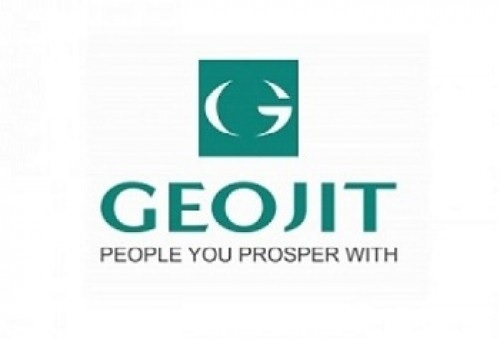
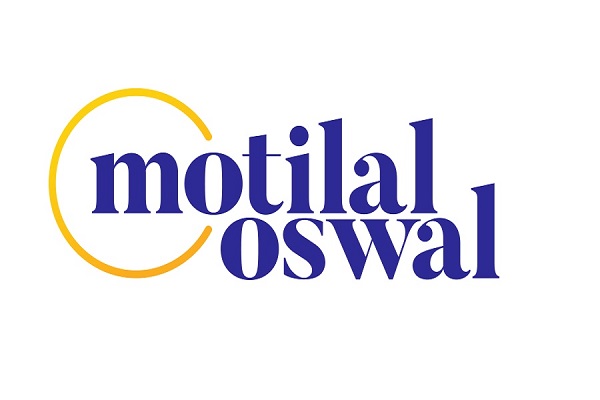

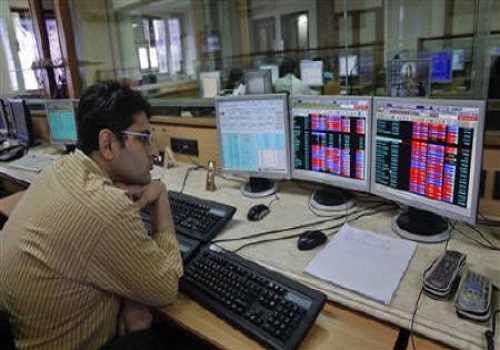
.jpg)


